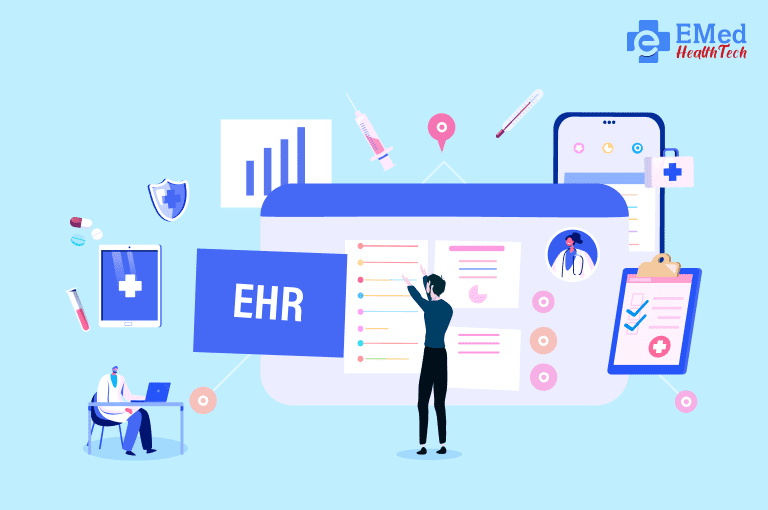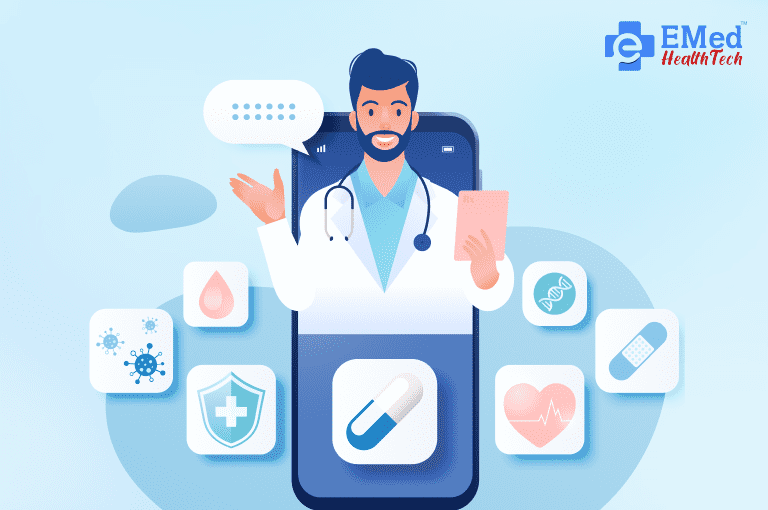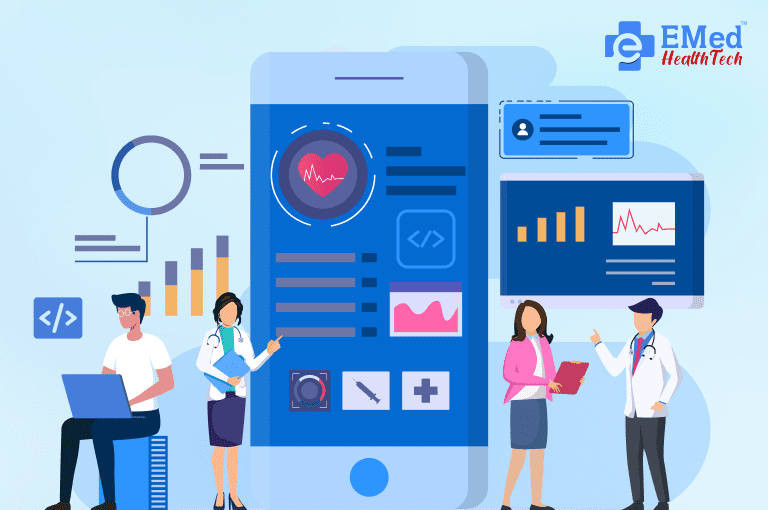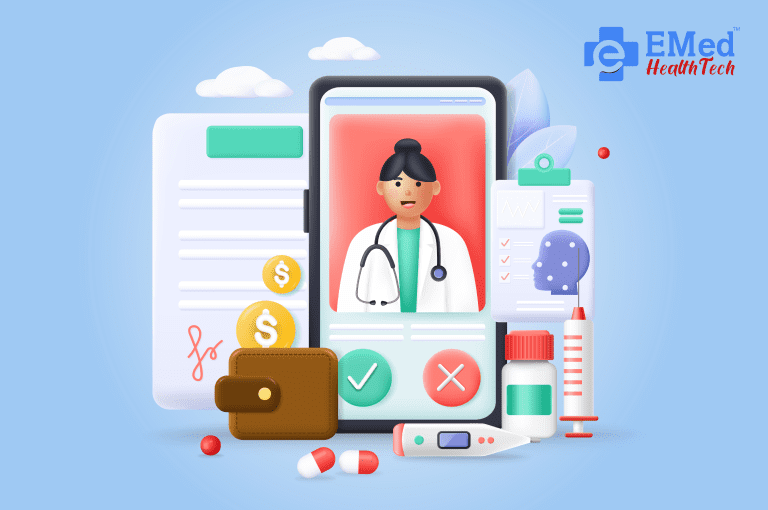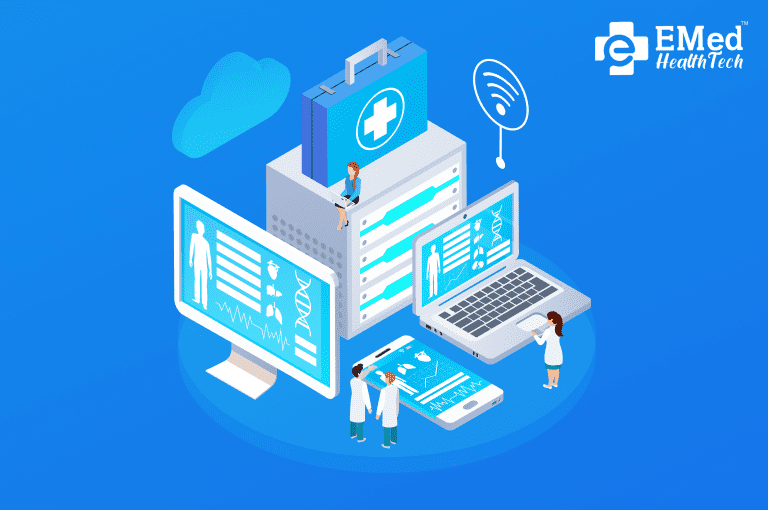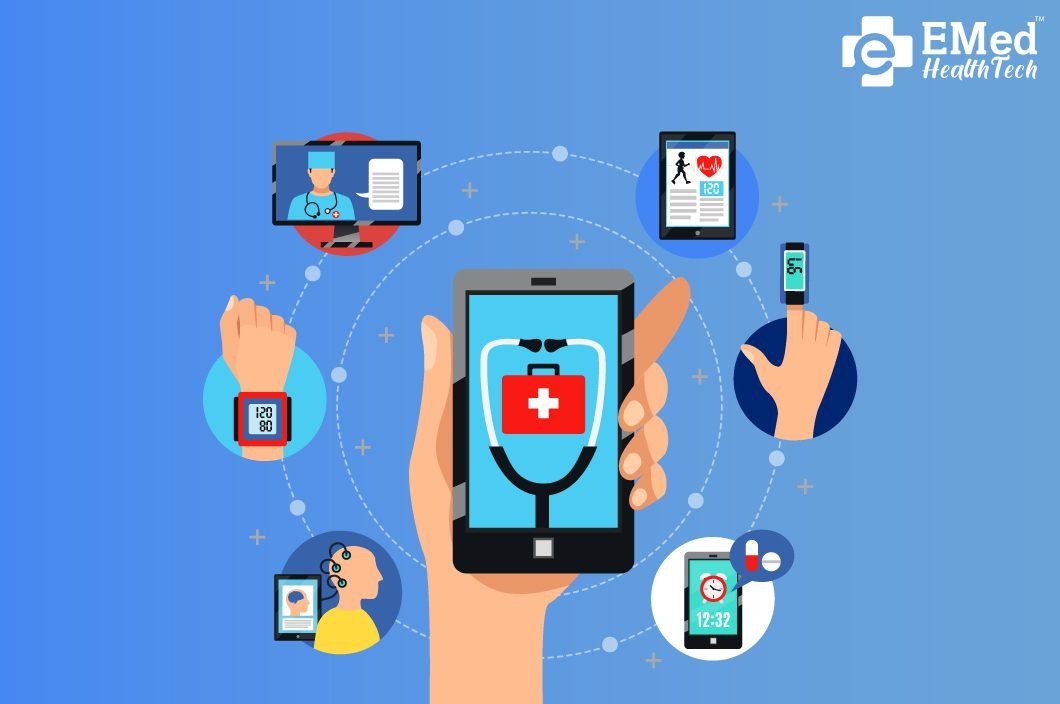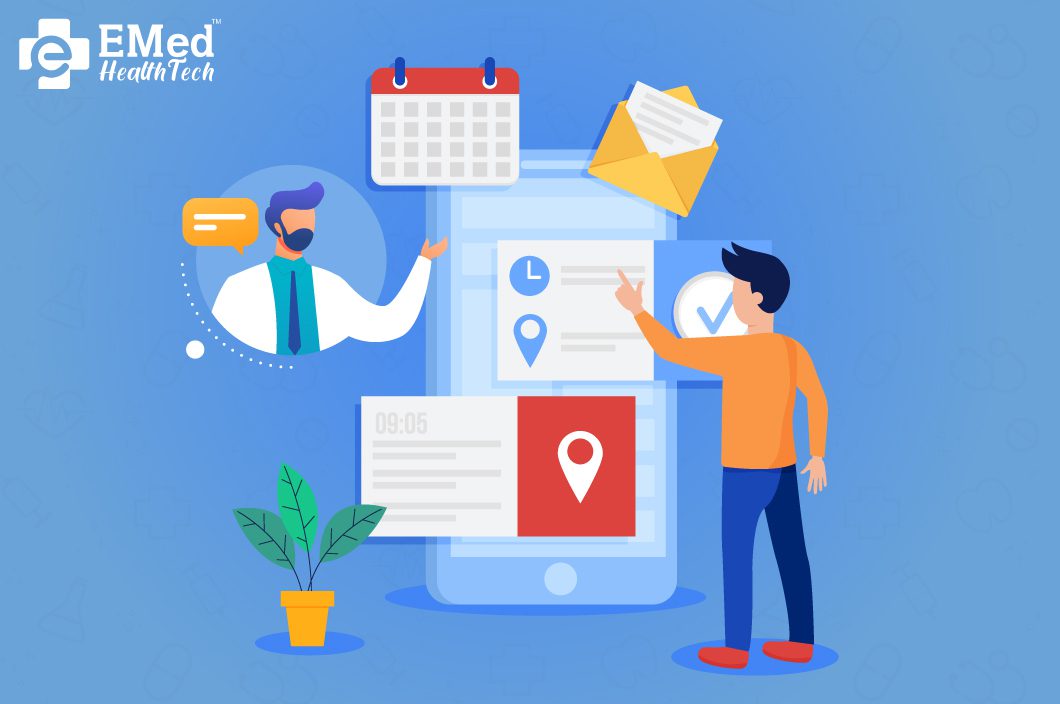For individuals who operate manually in hospitals, efficiently managing the hospital sector can be challenging. Thus, to overcome such problems in the rapidly evolving healthcare industry, building a top-tier Hospital Management System (HMS) is crucial.
Choosing HMS offers efficient hospital operations, improved patient care, and enhanced services with constant workflows. This article will take you through the essentials of creating a cutting-edge HMS for 2024, highlighting key factors, considerations, technology hacks, and upcoming trends.
What Are Hospital Management Systems?
A creative and all-inclusive Hospital Management System (HMS) software solution is designed to handle healthcare sectors’ financial, clinical, and operational aspects. HMS is an integration of modules that helps in managing patient data, appointments, billing, inventory, and more. In addition, it is easier to remotely control routine tasks and provide real-time data access with the assistance of HMS. This enhances the efficiency and potency of hospital management.
Top Key Features of a Top-Tier Hospital Management System
Patient Management
Efficient patient management is a robust task for the health sector. Executing effective HMS should offer significant patient management features, such as electronic health records (EHR), appointment scheduling, and patient enrollment. This module ensures that patient information is correct and easily accessible to enhance both operational effectiveness and patient care.
Appointment and Scheduling
Automated appointment scheduling helps individuals save time and travel expenses. In addition, patients can analyze when to meet with professionals, reducing no-shows and optimizing the use of hospital resources. Hospital management software provides an individual with various features like online registration, reminders, and calendar integration to improve the patient experience and streamline hospital performance.
Billing and Invoicing
Precise cash transactions and billing are crucial for patients and hospitals. A tailored billing module should be efficient enough to handle all money transfers, including patient billing, insurance claims, and the payment process. Hospital management software ensures accuracy, lessens operation burden, and improves revenue cycle management.
Inventory Management
A hospital has extensive inventories that need proper management. Hence, proficient inventory management is vital for keeping up stock levels of medications, medical supplies, and devices. Clinic management software gives real-time stock tracking, automated reorder alerts, and careful reporting to anticipate stockouts and wastage.
Laboratory Management
HMSs integrate with laboratory management systems to operate the seamless diagnostic data flow. Features like test ordering, result tracking, and lab report management improve accuracy and speed up diagnosis.
Reporting and Analytics
Present-day reporting and analytics devices can empower hospital administrators to make informed decisions. The same clinic management system offers customizable reports, data visualization, and predictive analytics to assist screen performance, recognize trends, and optimize operations.
Security and Compliance
Patient data and hospital regulatory compliance both require a system to secure the information. Well-developed custom clinic management software incorporates strong security measures, including encryption, access control, and review trails, to secure delicate patient information and comply with controls like HIPAA.
Factors To Consider For Building a Hospital Management System
User-Friendly Interface
A user-friendly hospital information system ensures that staff can quickly and efficiently adopt it. Building an HMS with an intuitive design, easy navigation, and responsive customer support is essential to maximizing user satisfaction.
Customization and Scalability
Hospitals have unique necessities, so a customizable and adaptable clinic management system is crucial. Custom hospital management software permits for joining of specific features customized to the hospital’s needs and can scale as the hospital develops.
Integration Capabilities
To ensure a cohesive and successful healthcare system, an HMS should consistently integrate with different systems, such as EHR, research facility data systems, and telemedicine platforms.
Cost and Budget
The overall cost of ownership is significant, including development, usage, support, and training. Choosing the best hospital management software that balances cost and features is essential for long-term maintainability.
Vendor Support and Training
Reliable vendor support and comprehensive training are essential for the successful use and operation of clinic management software. Ensure that the vendor provides ongoing support, upgrades, and preparation assets.
Revolutionizing Technology Stacks For A Modern Hospital Management System
Cloud Computing
Cloud-based hospital management software offers scalability, adaptability, and cost-effectiveness. It enables further access to information, empowers collaboration, and diminishes the requirement for an on-premises establishment.
Artificial Intelligence (AI)
AI-powered highlights like prescient analytics, computerized decision-making, and chatbots progress calm care and operational efficiency. AI can additionally help in overseeing huge datasets, distinguishing plans, and making data-driven choices.
Blockchain
Blockchain development guarantees information security, judgment, and straightforwardness. It is fundamental to keep up a tamper-proof understanding of records and enable secure information sharing among different healthcare suppliers.
Internet of Things (IoT)
IoT gadgets can collect and transmit real-time quiet data, empowering nonstop checking and early mediation. Integration with IoT improves patient care and improves operational productivity.
Step-by-step Guide To Build A Hospital Management System
Step 1: Define Requirements
Conduct a thorough needs appraisal to understand the hospital’s requirements. Distinguish the key features, client roles, and workflow processes that the HMS ought to support.
Step 2: Choose the Right Technology Stack
Select an innovation stack that adjusts to the hospital’s needs and future versatility. Consider cloud computing, AI, blockchain, and IoT innovations to construct a present-day and strong hospital management system.
Step 3: Design the System Architecture
Make a detailed system design that outlines the data flow, integration points, and security measures. Ensure the plan supports versatility, reliability, and performance.
Step 4: Develop and Test the System
Follow agile development techniques to construct the HMS in iterative stages. Conduct thorough testing to ensure the system meets useful, performance, and security requirements.
Step 5: Implement and Train
Implement the HMS continuously to diminish unsettling influences. Give comprehensive preparation to staff to ensure they can successfully utilize the system. Offer continuous support to address any issues during the move.
Step 6: Monitor and Optimize
Continuously screen the system’s performance and client feedback. Make fundamental optimizations and updates to improve functionality and address developing needs.
Future Challenges And Ways To Overcome Them While Building HMS
Data Security and Privacy
Ensuring the security and privacy of patient data may be a noteworthy challenge. To secure delicate data, vigorous security measures, regular reviews, and compliance with controls must be implemented.
Integration with Legacy Systems
Joining the HMS with existing legacy systems can be complex. To encourage seamless integration and data exchange, create standardized APIs and utilize middleware arrangements.
User Adoption
Encouraging staff to receive and viably utilize the modern system can be challenging. Provide comprehensive training, and progressing support, and include clients in the development process to ensure buy-in and ease of utilize.
Keeping Up with Technological Advancements
Healthcare technology is quickly advancing. Stay informed about developing advances and persistently update the HMS to use new advancements and keep up competitiveness.
Exploring Future Trends In Hospital Management Systems
Telemedicine Integration
Telemedicine is becoming increasingly vital for providing inaccessible care. Future clinic data frameworks will coordinate telemedicine capabilities to encourage virtual meetings, inaccessible observation, and persistent engagement.
Prescient Analytics
Prescient analytics will play a significant part in proactive healthcare administration. Future HMS will use AI to foresee quiet results, optimize asset allotment, and make strides in preventive care.
Upgraded Persistent Engagement
Patient-centric highlights like portable apps, quiet entrances, and personalized well-being bits of knowledge will improve persistent engagement. Future HMS will center on giving consistent and personalized quiet encounters.
Interoperability
Interoperability will be a key center, empowering consistent information trade between diverse healthcare frameworks and suppliers. This will improve care coordination and guarantee an all-encompassing view of well-being.
Takeaway
Building a top-tier Hospital Management System for 2024 requires careful planning, the right technology stack, and a focus on user needs. By joining progressed innovations like AI, blockchain, and IoT and tending to future challenges, healthcare suppliers can make a strong, productive, and patient-centric HMS. As the healthcare scene advances, remaining ahead of patterns and persistently optimizing the HMS will be significant for conveying high-quality care and accomplishing operational fabulousness.
EMed HealthTech has experts in developing custom hospital management software and offers several services and solutions to cater to modern needs of hospitals and clinics. Contributing to the best hospital management software and custom healthcare arrangements will guarantee that your clinic is well-equipped to meet the requests of advanced healthcare and provide extraordinary, quiet care.

